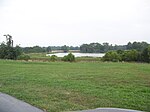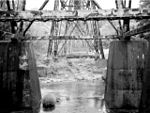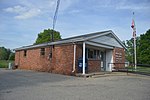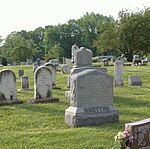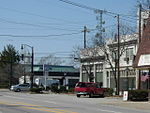Blackacre State Nature Preserve is a 271-acre (110 ha) nature preserve and historic homestead in Louisville, Kentucky. The preserve features rolling fields, streams, forests, and a homestead dating back to the 18th century. For visitors, the preserve features several farm animals including horses, goats, and cows, hiking trails, and a visitor's center in the 1844-built Presley Tyler home. Since 1981, it has been used by the Jefferson County Public Schools as the site of a continuing environmental education program. About 10,000 students visit the outdoor classroom each year.
The preserve was created in 1979 when the land was given to the Office of Kentucky Nature Preserves by Judge Macauley and Mrs. Emilie Smith creating the first nature preserve in the Commonwealth's system. The Blackacre Conservancy, founded in 1983, operates the historic homestead and conducts cultural and historical programs while the Office retains ownership of the preserve and manages its natural resources.
Blackacre is part of the old Moses Tyler farm, several original farm buildings remain, including the 1844 Presley Tyler home, an Appalachian-style barn and a reconstructed stone spring house. The entire 600-acre (240 ha) settlement has been named a national historic rural settlement. It was listed on the National Register of Historic Places as Tyler Settlement Rural Historic District in 1986.The name Blackacre is used as a generic name in legal contexts, particularly in law school and on bar exams, to refer to a parcel of land. The Smith family gave the land the name Blackacre; previously it was known as Land O'Skye.
